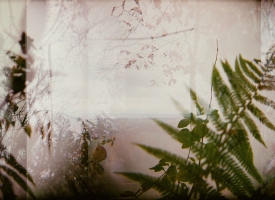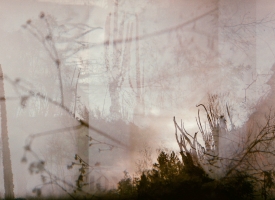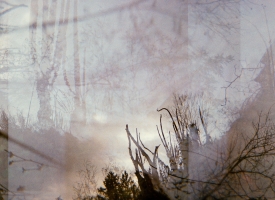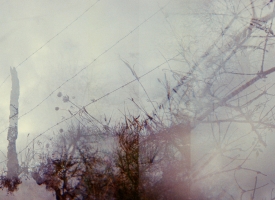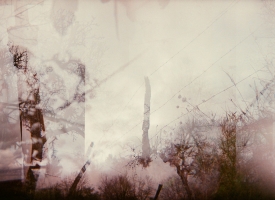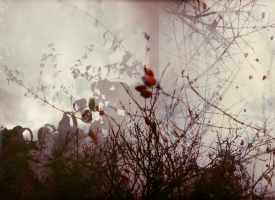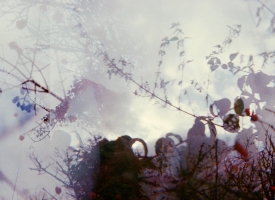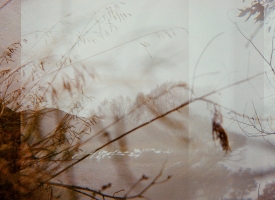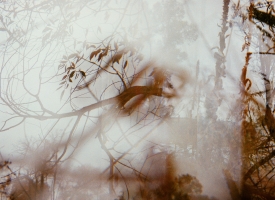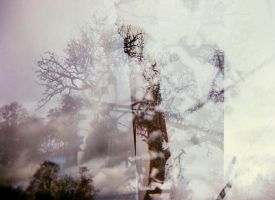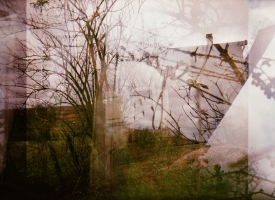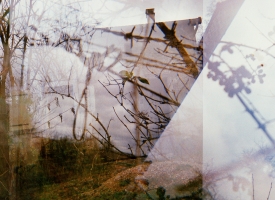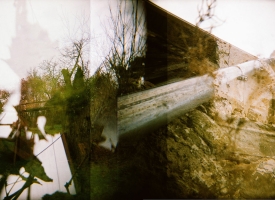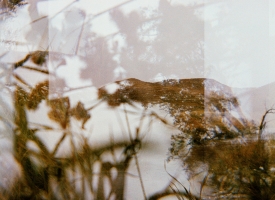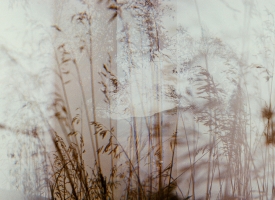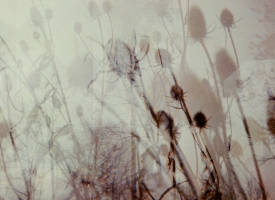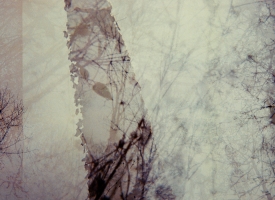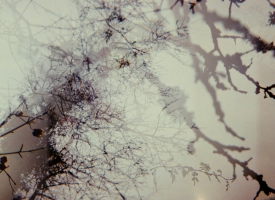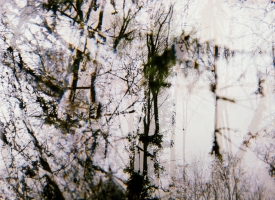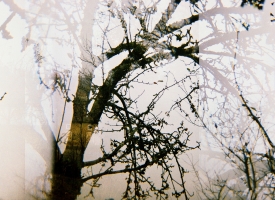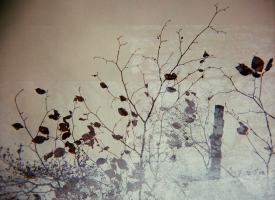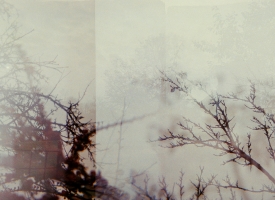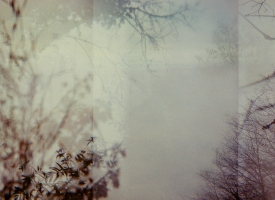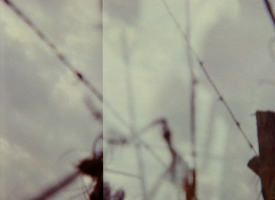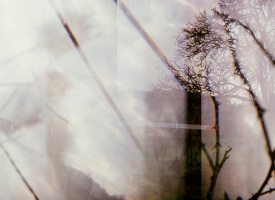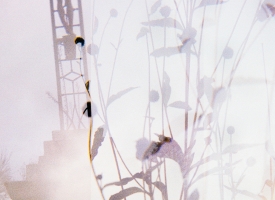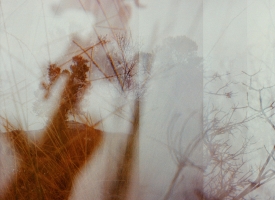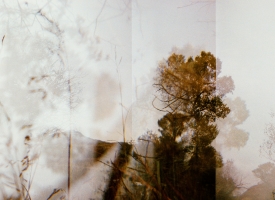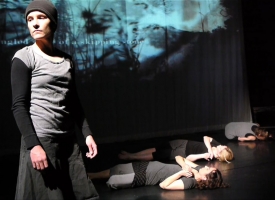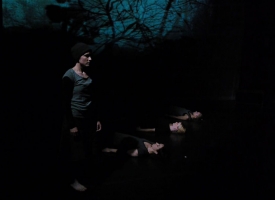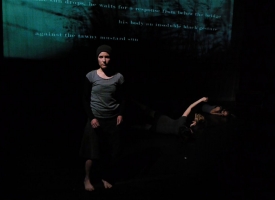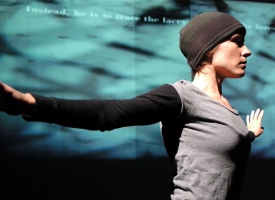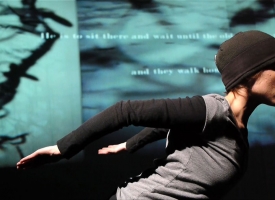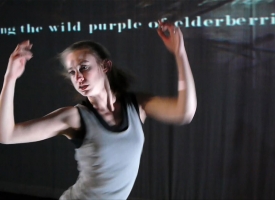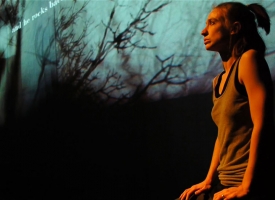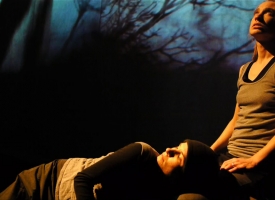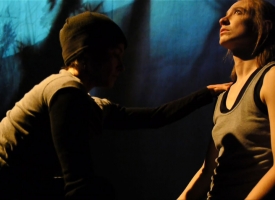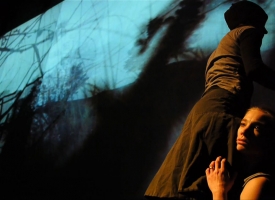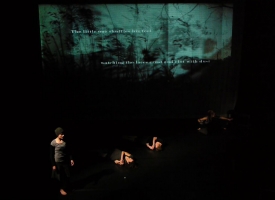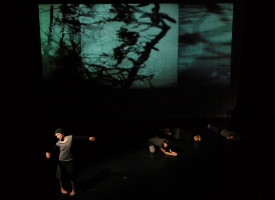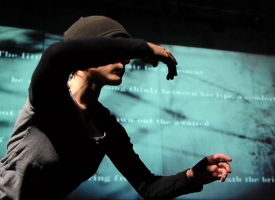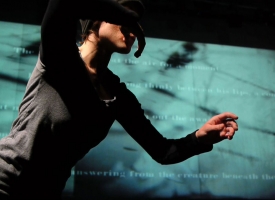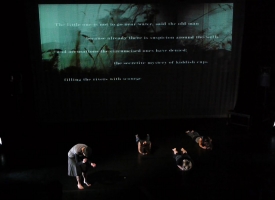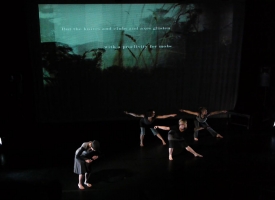SCHWARZER TOD AND THE USELESS EATERS
Project Description
Quintan Ana Wikswo’s SCHWARZER TOD AND THE USELESS EATERS is a constellation of the artist’s photographs, installation films, prose poem texts in English, German and Hebrew, and collaborative live performance works. Together, they tell an incandescent haunting fairy tale of village life within the prelude to genocide.
Working in the Black Forest beyond Strasbourg, Quintan Ana Wikswo created the project using salvaged Nazi battlefield cameras and military typewriters manufactured with concentration camp slave labor.
Amidst elderberries and larks’ nests, birch trees and wild carrots, a group of children disregard their elders’ warnings: never go near water. To the children, the danger is an imaginary troll crouched beneath the river bridge.
To the elders, the threat is far more real.
It is the summer of 1351 and the Black Death has come to Germany. Over two hundred Jewish communities have been destroyed, yet these people are not killed by the bubonic plague but by mobs of neighbors who accuse them of poisoning Christian water sources. By the 15th century, only three substantial Jewish communities remain in all of Germany.
Purchase Schwarzer Tod and the Useless Eaters / Artist Book >>
Artist Statement
The Black Forest is perhaps the most richly fabled terrain in Europe. For centuries, children in European cultures listened to the stories set within those woods. As a writer, I was as captivated as all the rest. As a photographer, the aching primordial beauty of the forest seemed to demand and rebuke a human narrative, the human grasp at mythos.
In the spaces between the trees and the spaces within the stories, I became compelled by what was left out and unsaid – in a fairytale book read by Jewish children, what would have existed in the margins?
My desire was to make photographs devoid of people and of architecture – images that only revealed the searing beauty of the ecology itself. This is the forest as children know it first: inhabited by all sorts of otherworldly denizens, the beings of legend, not of tragedy. And then the line between it all blurs – is the beast beneath the bridge a troll, or is it your neighbor, or is it both?
Visual Art
All photographs were created in and around the Black Forest in Germany and Alsace, using salvaged film cameras manufactured by forced labor in Nazi Germany.
The colors, textures, shapes and multiple layers within the photographs are all created using only the unique aberrations of the cameras’ optics, and the chemistry of the film. There is no software or computer manipulation in the images.
Exhibited in solo museum exhibition at Yeshiva University Museum, NYC (August 2011-April 2012)
THUMBNAIL GALLERY BELOW. CLICK TO VIEW FULL-SIZE PANORAMIC IMAGES.
Literature
SCHWARZER TOD AND THE USELESS EATERS
/ SCHWARZER TOD UND DIE NUTZLOSEN ESSER
by Quintan Ana Wikswo
translated into German by Dorothea Herreiner
first published in Denver Quarterly
The little one stands at the edge of the wooden bridge in his wood and leather shoes. Three times he stomps his feet: klompf klompf klomf, left, right, left. He waits.
Der Kleine steht am Rand der Holzbrücke in seinen Holz- und Lederschuhen. Dreimal stampft er mit dem Fuß auf: klompf klompf klompf, links, rechts, links. Er wartet.
2
Beside him, the larks have built their nests in the dry and chalky weeds and wild carrots that clutch around the earthfast timber posts. Later, the birds will skim the air with the angled slice of a skipping stone.
Die Lerchen haben ihre Nester im trockenen und kreidestaubigen Unkraut und in den wilden Karotten gebaut, die die gegründeten Holzpfosten umklammern. Später werden die Vögel im Winkel eines hüpfenden Steins durch die Luft gleiten.
3
The little one shuffles his feet, watching the laces crust and clot with dust. As the sun drops, he waits for a response from below the bridge, his body an insoluble black gesture against the tawny mustard sun. It seems he’s a single letter – a ג or a נ ‐ drawn there by some unseen hand, writ dense upon the fading sky.
Der Kleine schlurft hin und her, beobachtet wie seine Schnürsenkel mit Staub verkrusten und gerinnen. Während die Sonne sinkt, wartet er auf eine Antwort von unter der Brücken, sein Körper ist eine nicht lösliche schwarze Geste vor der goldgelb senffarbenen Sonne. Es ist, als ob er ein einzelner Buchstabe ist – ein gimel oder ein nun gemalt von einer ungesehenen Hand, dicht gedruckt auf den verschwindenden Himmel.
4.
The little one sips at the air for a moment before he sings a school song thinly between his lips, a comfort, but not loud enough to drown out the awaited rompf rompf rompf answering from the creature beneath the bridge.
Der Kleine nimmt kurz einen Schluck der Luft bevor er ein Schullied dünn zwischen den Lippen singt, zur Beruhigung, aber nicht so laut dass die erwartete rompf rompf rompf Antwort der Kreatur unter der Brücke darin untergehen würde.
5.
Never is the little one to walk home and cross the bridge alone. Instead, he is to trace the lacey pattern of the forest pathway and follow it until he comes to a red wooden bench the old man carved for him with a chisel and mallet. He is to sit there and wait until the old man meets him, and they walk home talking of the day. The bench has the little one’s name written on it deep in the birch wood, and that of his sister. But the little one won’t sit there, because that’s where the bridge beast will come looking for him.
Nie soll der Kleine beim nach Hause gehen allein die Brücke überqueren. Er soll auf
dem windenden Pfad des Waldwegs bleiben und ihm folgen bis er eine rote Holzbank erreicht, die der alte Mann für ihn mit Hammer und Meißel geschnitzt hat. Er soll dort sitzen und warten bis der alte Mann ihm entgegenkommt und sie nach Hause gehen und über den Tag reden. Tief ins Birkenholz der Bank ist der Name des Kleinen und der
seiner Schwester eingeritzt. Aber der Kleine will dort nicht sitzen, denn dort wird das Brückenungeheuer ihn suchen.
6.
As the little one waits at the edge of the wooden bridge, preparing for battle with its troll below, the seedpods whirligig down upon the faraway and empty bench, siliculed as a wedding night. Deeper in the forest the young men have felled branches and stacked them into vaulted cones, and crawl inside with their young women. There are greyheaded ravens too, mated for life, and a thousand hoofed and padded feet traversing the forest floor, all pushing the seedpods deep down into the sorrel roots and loam. Seed grave become tree cradle.
Während der Kleine am Rande der Holzbrücke wartet und sich auf den Kampf mit dem Troll darunter vorbereitet, kreiseln die Samenschoten runter auf die ferne und leere Bank, reich an Saat wie eine Hochzeitsnacht. Tiefer im Wald haben junge Männer Äste gefällt und sie zu Kegeln mit Gewölben aufgestapelt, in die sie mit ihren jungen Frauen kriechen. Dort sind auch grauköpfige Raben, lebenslang gepaart, und tausend behufte und gepolsterte Füße überqueren den Waldboden und schicken dabei die Samen tiefer in die Sauerampferwurzeln und den Lehmboden. Samengrab wird zur Baumwiege.
7.
The little one is not to cross the bridge because the old man doesn’t want him seen lingering near a source of water. Half of Bremen dead. Half of Hamburg, and even more in Köln. The sickness impervious to punishments or constraint: an ache that rises in the skull, a stomach set sail upon uneven seas, then high fevers and private swellings that fasten on to the afflicted, waste them , and move on. Once‐white skin now showing the wild purple of elderberries.
The little one is not to go near water, said the old man, because already there is suspicion around the wells, and accusations the circumcised ones have denied: the secretive mystery of kiddish cups filling the rivers with scourge.
But the knives and clubs and axes glisten with a proclivity for mobs.
Der Kleine soll die Brücke nicht überqueren weil der Alte ihn nicht in der Nähe eines Wassers sehen möchte. Halb Bremen ist tot. Halb Hamburg, und noch mehr in Köln. Die Krankheit lässt sich nicht beeindrucken durch Bestrafung und Beschränkung: ein Schmerz, der im Schädel ansteigt, ein Magen, der auf unruhiger See Segel setzt, dann hohes Fieber und Schamschwellungen die sich an die Leidgeprüften heften, sie dahinsiechen lassen und dann weiterziehen. Vormals weiße Haut zeigt jetzt das wilde Lila der Holunderbeere.
Der Kleine soll nicht in die Nähe des Wassers gehen, sagt der alte Mann, weil es schon Mutmaßungen über die Wasserquelle gab und Anschuldigungen, die die Beschnittenen verneint haben: das geheimnisvolle Mysterium der Kidduschbecher die den Fluss mit Geißeln füllen.
Aber die Messer, Schläger und Äxte glänzen mit einer Neigung für Mobs.
8.
At night, after the villagers, after the torches, after the torn hair and all the voices, the rats descend from the bridge to swim in the river at night. After the villagers, exhausted, after the little one waited too long at the bridge, after the others playing along the riverbank.
Über Nacht, nach den Dorfbewohnern, nach den Fackeln, nach dem ausgerissenen Haar und all den Stimmen, klettern die Ratten in den Fluss um über Nacht zu schwimmen. Nach den Dorfbewohnern, erschöpft, nachdem der Kleine zu lange an der Brücke gewartet hat, nach den anderen, die am Flussufer spielen.
10.
After the bodies are claimed, there is too much blood, and it doesn’t seem proper. Clean dresses are found for the little girls. Clean trousers for the little boys. The clothes will soon get muddy inside the common grave. The only thing greater than the bodies of our children is the Shema, says the old man, and he rocks back and forth, the words of the prayer falling from his mouth like teeth.
Nachdem die Leichen identifiziert sind, ist zu viel Blut da und es erscheint nicht anständig. Saubere Kleider werden für die kleinen Mädchen gefunden. Saubere Hosen für die kleinen Jungen. The Kleider werden in Kürze schlammig sein im gemeinsamen Grab. Die einzige Sache, die mächtiger ist als die Körper unsere Kinder, ist das Schma, sagt der alte Mann, und er wiegt hin und her, die Worte des Gebets fallen aus seinem Mund wie Zähne.
Published in Denver Quarterly
Film
Performance
Credits
Photographs, Films and Text: Quintan Ana Wikswo
Composer: Veronika Krausas, Andrea Clearfield
Choreographer: Manfred Fischbeck
Dancers: GroupMotion Dance Company
Translation into German: Dorothea Herreiner
Translation into Hebrew: Osnat Naor
SCHWARZER TOD AND THE USELESS EATERS is supported by the National Endowment for the Arts, Haute de Fee (France), Ucross Foundation, Ragdale Foundation, Catalysis Projects, Oberpfalzer Kunstlerhaus (Germany), Catalysis Projects (Los Angeles).
Publications include Denver Quarterly (first serial publication) and Catalysis Projects (artist’s book and DVD).
Performances, exhibitions and presentations include Yeshiva University Museum (New York City), Center Theater (Philadelphia), Kebbel Villa (Germany).


